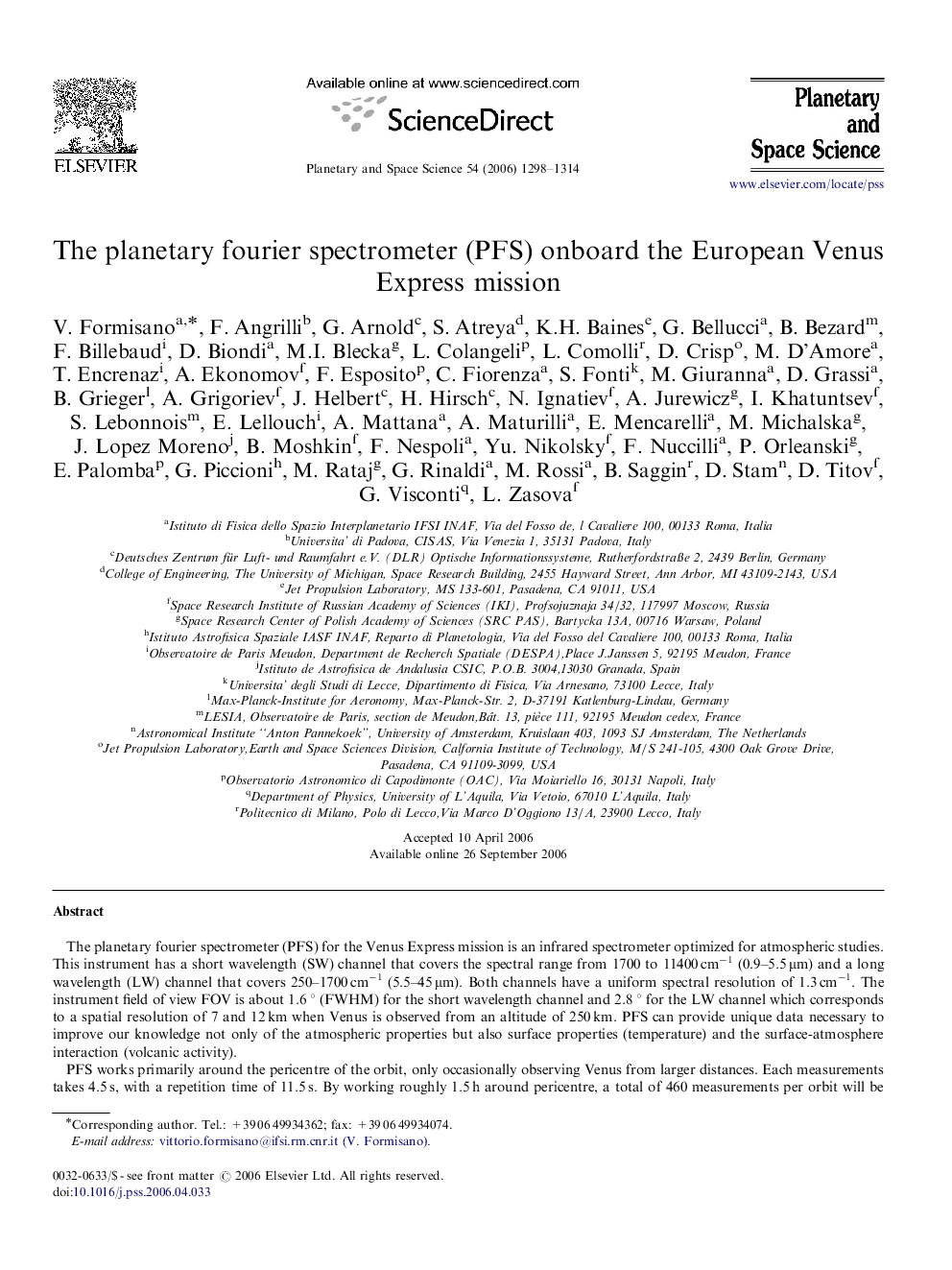| کد مقاله | کد نشریه | سال انتشار | مقاله انگلیسی | نسخه تمام متن |
|---|---|---|---|---|
| 1782393 | 1523975 | 2006 | 17 صفحه PDF | دانلود رایگان |

The planetary fourier spectrometer (PFS) for the Venus Express mission is an infrared spectrometer optimized for atmospheric studies. This instrument has a short wavelength (SW) channel that covers the spectral range from 1700 to 11400 cm−1 (0.9–5.5 μm) and a long wavelength (LW) channel that covers 250–1700 cm−1 (5.5–45 μm). Both channels have a uniform spectral resolution of 1.3 cm−1. The instrument field of view FOV is about 1.6 ° (FWHM) for the short wavelength channel and 2.8 ° for the LW channel which corresponds to a spatial resolution of 7 and 12 km when Venus is observed from an altitude of 250 km. PFS can provide unique data necessary to improve our knowledge not only of the atmospheric properties but also surface properties (temperature) and the surface-atmosphere interaction (volcanic activity).PFS works primarily around the pericentre of the orbit, only occasionally observing Venus from larger distances. Each measurements takes 4.5 s, with a repetition time of 11.5 s. By working roughly 1.5 h around pericentre, a total of 460 measurements per orbit will be acquired plus 60 for calibrations. PFS is able to take measurements at all local times, enabling the retrieval of atmospheric vertical temperature profiles on both the day and the night side.The PFS measures a host of atmospheric and surface phenomena on Venus. These include the:(1) thermal surface flux at several wavelengths near 1 μm, with concurrent constraints on surface temperature and emissivity (indicative of composition); (2) the abundances of several highly-diagnostic trace molecular species; (3) atmospheric temperatures from 55 to 100 km altitude; (4) cloud opacities and cloud-tracked winds in the lower-level cloud layers near 50-km altitudes; (5) cloud top pressures of the uppermost haze/cloud region near 70–80 km altitude; and (6) oxygen airglow near the 100 km level. All of these will be observed repeatedly during the 500-day nominal mission of Venus Express to yield an increased understanding of meteorological, dynamical, photochemical, and thermo-chemical processes in the Venus atmosphere. Additionally, PFS will search for and characterize current volcanic activity through spatial and temporal anomalies in both the surface thermal flux and the abundances of volcanic trace species in the lower atmosphere.Measurement of the 15 μm CO2 band is very important. Its profile gives, by means of a complex temperature profile retrieval technique, the vertical pressure-temperature relation, basis of the global atmospheric study.PFS is made of four modules called O, E, P and S being, respectively, the interferometer and proximity electronics, the digital control unit, the power supply and the pointing device.
Journal: Planetary and Space Science - Volume 54, Issues 13–14, November 2006, Pages 1298–1314